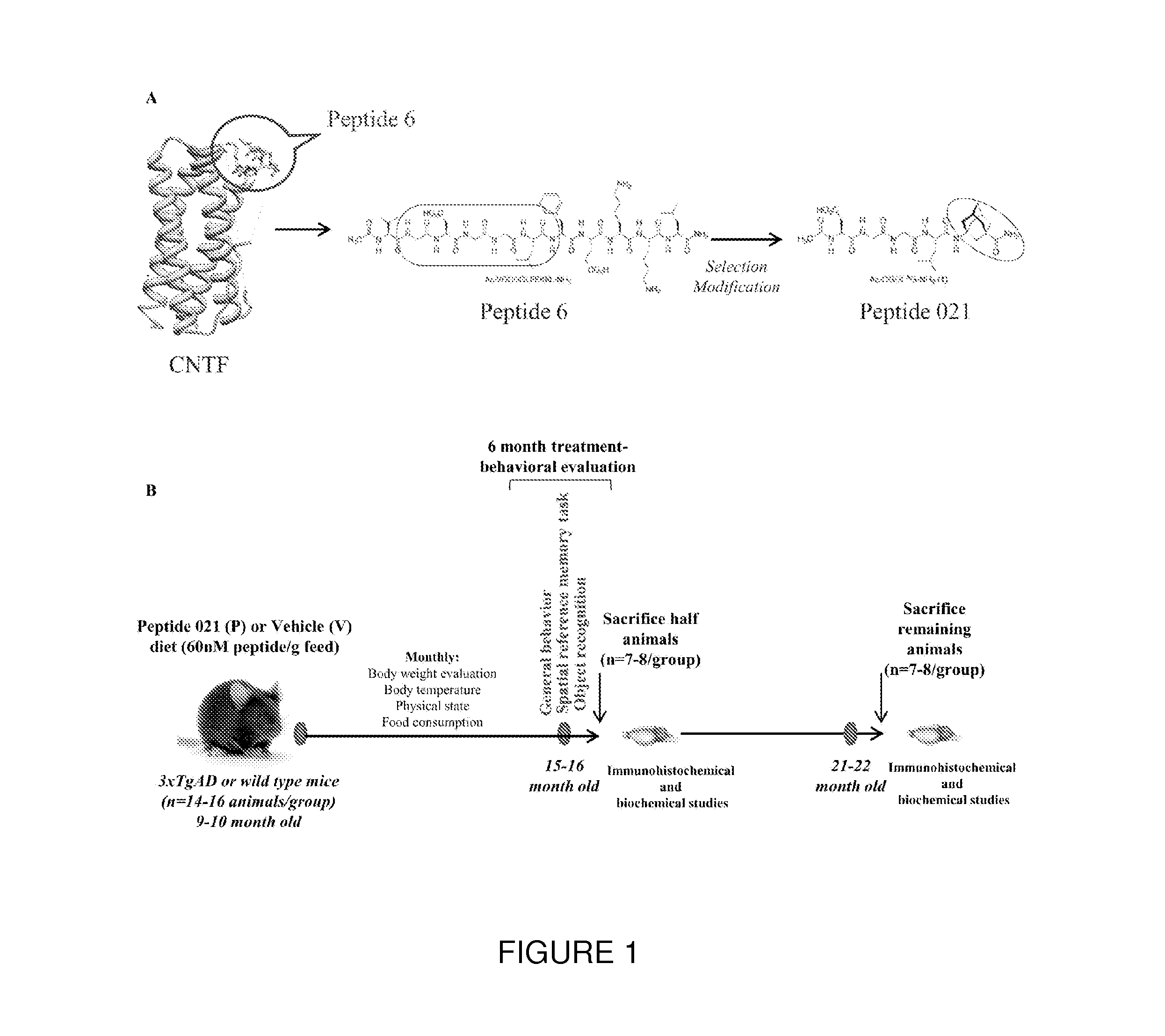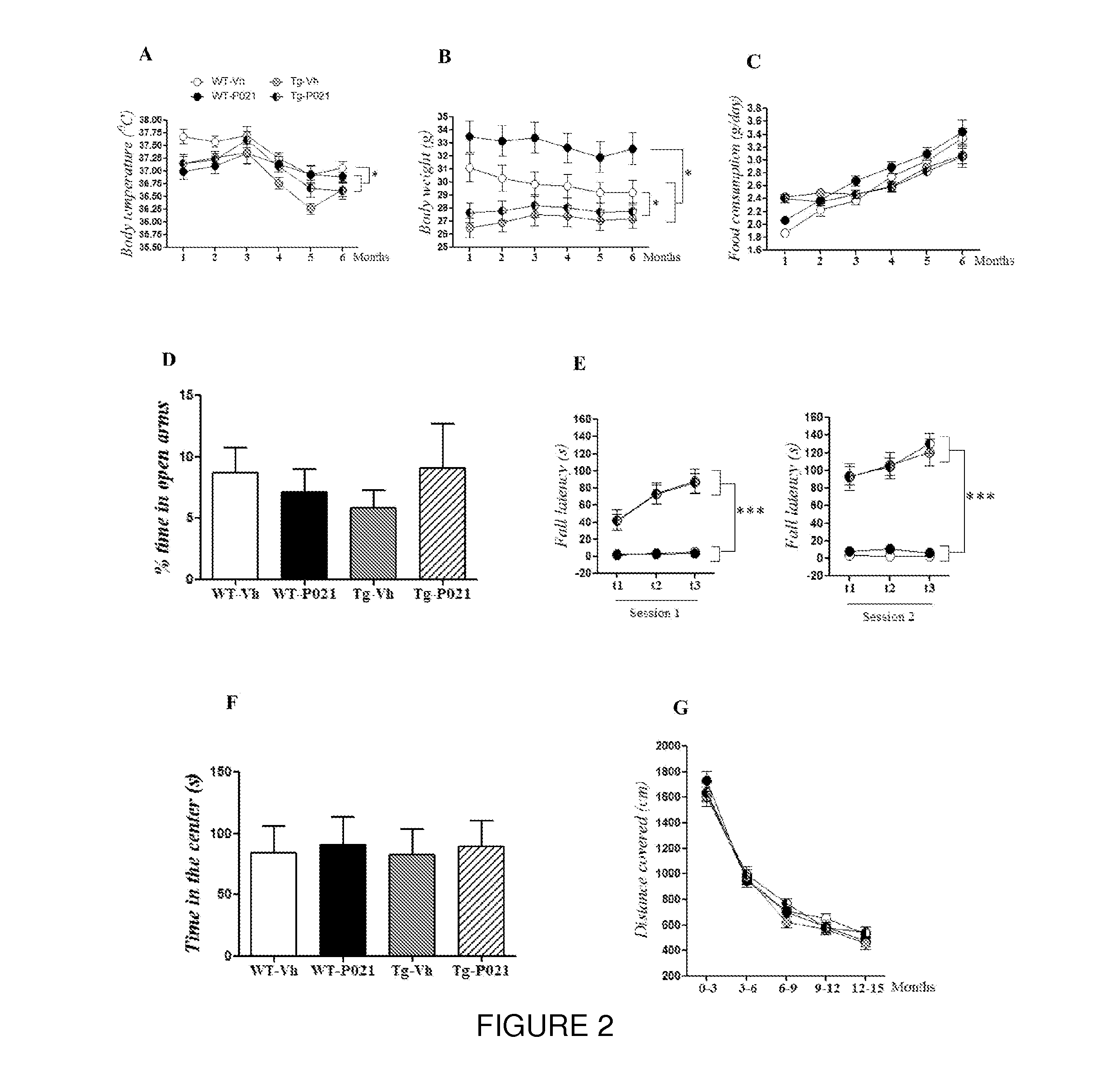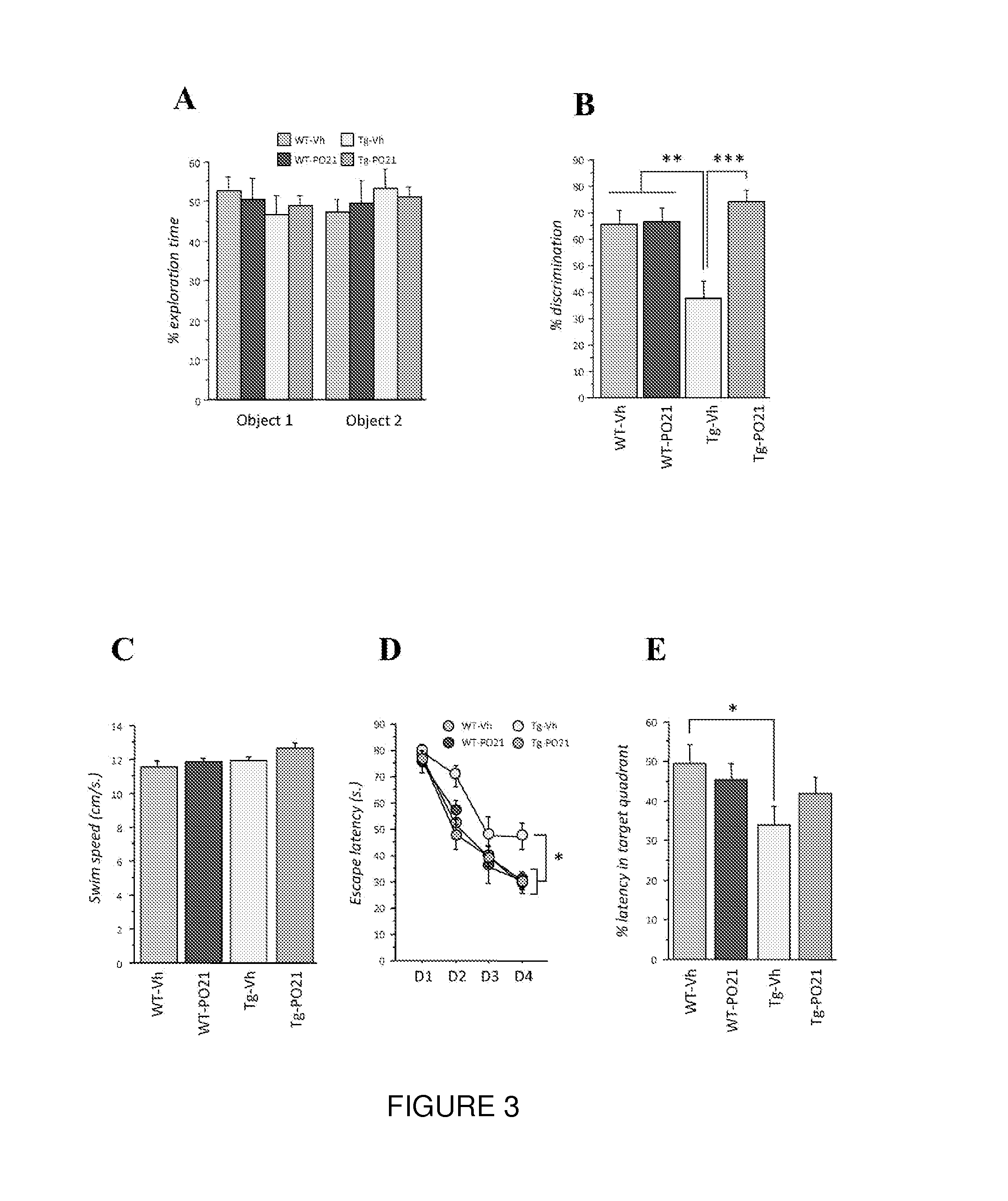Neurotrophic peptides for the treatment of tauopathies
a neurogenic and neurotrophic peptide technology, applied in the direction of peptide/protein ingredients, drug compositions, metabolic disorders, etc., can solve the problems of loss of microtubule assembly promoting and stabilizing protein function, gain of toxic function, loss of microtubules, etc., to enhance the ability to pass, reduce the size of the tumor, and improve the effect of tauopathies
- Summary
- Abstract
- Description
- Claims
- Application Information
AI Technical Summary
Benefits of technology
Problems solved by technology
Method used
Image
Examples
example 1
[0082]In this Example, the chronic treatment with Peptide 21 is shown to restore neuronal and synaptic plasticity, associated cognitive impairments, and the underlying tau pathology in the later stage of the AD-like pathology. The 3×TgAD female mice and wild type (WT) controls were treated with Peptide 021 or vehicle diet (n=14-16 / group) starting at 9-10 months of age. Treatment continued for a total period of 12 months. Animals were behaviorally tested after 6 months of treatment (15-16 months of age). After completion of the behavioral task, half of the animals (n=7-8 / group) were perfused and brains were collected for immunohistochemical and biochemical analysis. Remaining animals were continued on Peptide 021 / vehicle diet for another 6 months, and were sacrificed at 21-22 months of age for immunohistochemical and biochemical analysis (FIG. 1B).
[0083]Since administration of the full-length CNTF protein in human clinical trials is known to cause anorexia, skeletal muscle loss, hype...
example 2
[0121]In another study, a blood-brain barrier (BBB) permeable CNTF derived peptidergic compound, Peptide 021 (P021) (SEQ. ID. NO. 3) was used, which exerts neurogenic and neurotrophic effects mainly by inhibiting leukemia inhibitory factor (LIF) signaling pathway and enhancing brain derived neurotrophic factor (BDNF) expression by increasing its transcription. Chronic treatment with P021, administered in diet to triple transgenic AD (3×Tg-AD) mice, can not only restore impairments in neurogenesis, dendritic and neuronal plasticity, and cognition at moderate stage of the disease but also strongly attenuate tau pathology both at moderate and severe stages of the disease. P021 also exerted a marginal reduction in Aβ pathology at moderate stage of the disease. This disease modifying effect of P021 was probably due to the increased BDNF expression-mediated reduction in glycogen synthase kinase-3β (GSK3β) activity we found in the P021-treated 3×Tg-AD mice, and further confirmed in P021-tr...
PUM
| Property | Measurement | Unit |
|---|---|---|
| height | aaaaa | aaaaa |
| height | aaaaa | aaaaa |
| synaptic plasticity | aaaaa | aaaaa |
Abstract
Description
Claims
Application Information
 Login to View More
Login to View More - R&D
- Intellectual Property
- Life Sciences
- Materials
- Tech Scout
- Unparalleled Data Quality
- Higher Quality Content
- 60% Fewer Hallucinations
Browse by: Latest US Patents, China's latest patents, Technical Efficacy Thesaurus, Application Domain, Technology Topic, Popular Technical Reports.
© 2025 PatSnap. All rights reserved.Legal|Privacy policy|Modern Slavery Act Transparency Statement|Sitemap|About US| Contact US: help@patsnap.com



